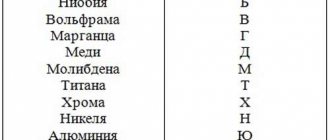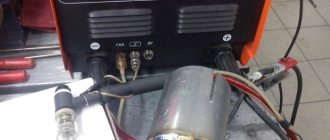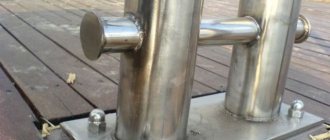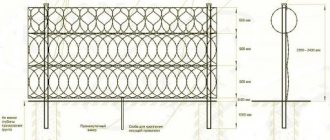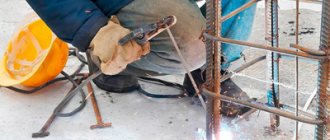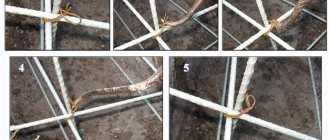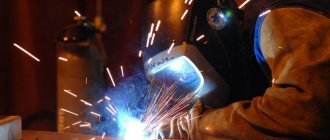Semi-automatic welding of stainless steel (MIG) is the most common method of welding in a shielding gas environment. It is widely used in large industrial production and in car repair shops. This type of welding is a high-tech process in which welding wire is automatically fed into the welding zone. Moreover, this wire is both an electrode and a filler metal. Under the influence of the heating of the arc, it melts. The quality of the arc is affected by the choice of operating mode of the welder:
- current magnitude;
- wire feed speed;
- choice of shielding gas and its consumption.
With the correct choice of welding mode, the weld is formed quickly and evenly. The protective mixture is mainly a mixture of argon and carbon dioxide. In some cases, oxygen is used instead of carbon dioxide. The technology of the welding process using a semi-automatic machine must take into account the structure of the metal, its characteristics and chemical properties.
Welding stainless steel is quite simple, but requires compliance with a number of standards and conditions. Let's start with a description of the burner operation diagram.
Burner operation diagram
Welding torch diagram.
Description of the burner diagram
1. burner body. To obtain a high-quality seam, it must have a certain angle of inclination to the surface of the metal being welded during the welding process;
2. nozzle. For optimal heating of the seam, it must be at a strictly defined angle and at an optimal distance from the surface being treated;
3. conductive tip. The assembly is located inside the nozzle;
4. electrode welding wire. The consumable passes through the conductive tip. A special wire is used for welding. It contains nickel, which improves the characteristics of the seam. The wire is fed into the burner in pulses, and the metal enters the bath one drop at a time;
5. welding arc. This is a source of thermal energy that heats metal and wire;
6. weld. It is obtained by welding parts;
7. weld pool. The area of molten metal in which a weld is formed;
8. base metal. Metal to be welded;
9. drops of electrode metal. The electrode welding wire melts and replenishes the weld pool in the form of drops;
10.gas protection. The area formed by the shielding gas.
Stainless steel welding methods
Welding stainless steel can be done in several ways:
- pulse welding;
- short arc welding. Used for welding thin metal;
- jet transfer welding. Used for welding thick-walled metal.
Pulse welding has become the most widespread, and therefore we will dwell on it in particular.
Pulse welding is a controlled process. It is carried out at an average current level, which reduces heat input and, as a consequence, the overall thermal affected zone. This results in the optimal size of the weld pool, and this is very important for stainless steel. With pulse technology there is no splash of molten metal. This improves the safety of the welding process and saves material. In addition, the time spent on cleaning the seam is reduced, and its surface is of a higher quality.
Stainless steel welding wire and its proper use
Special stainless steel welding wire is available in 3 grades:
- food grade stainless steel low alloy;
- food chemical stainless medium alloyed;
- high-pressure, heat-resistant, chemical, stainless, high-alloy.
When semi-automatically welding stainless steel, you should choose the right welding wire. To do this, you should take into account its features:
- the first two grades of the wire indicated above will ensure the mixing of all alloying elements. This burns out the metal (especially chrome). This is due to the fact that during the welding process aggressive environments are encountered, and a corrosion process occurs;
- The third brand of welding wire is special. When using it, there is no stress in the seam and, as a result, cracks. The seam is of better quality.
Preparatory work
Before welding begins, some preparatory work must be done:
- degrease the surfaces of the parts to be welded. In this case, it is necessary to completely remove the oxide film;
- Before the welding process itself, it is necessary to dehydrate the future seam. To do this, it is heated with a burner to a temperature T = 100°C. During the welding process of a continuous seam, all remaining excess boils away automatically. If the seam is intermittent (and in some other cases), then the area of the metal around the future seam is heated to T = 200°C (sometimes the entire workpiece is subjected to this procedure). Dehydration allows you to reduce the effect of moisture on the metal near the weld pool during the heating process during welding. It is not recommended to heat two different types of steel at the same time (only one type).
Difficulties in welding stainless steel
Stainless steel is characterized by increased resistance to acids and corrosion due to the presence of alloying components in its alloy. But due to these additives, the material is difficult to weld. Its thermal conductivity is 2 times less than pure metal.
When welding parts, it becomes difficult to remove heat from the joint, which contributes to overheating of surfaces, burnout of chrome, and burning through the material. To prevent this, welding work is performed with a current value that is 15-20% less than standard welding. In this case, the workpieces are additionally cooled by forced cooling.
The coefficient of thermal expansion of stainless metal is quite high. This contributes to cracking of the weld and adjacent steel. To prevent this process, a large gap is made between the parts.
When welding stainless steel structures, electrodes overheat due to the strong electrical resistance of the material. This negatively affects the quality of work. Experienced craftsmen cut the electrodes to the minimum possible length so that they do not have time to heat up.
Types of stainless steels
The main alloying element of steels classified as stainless steels is chromium. It is thanks to this element, which stainless steel must contain at least 12%, that an oxide film is created on its surface. Despite the very small thickness of such a film, sometimes not exceeding the size of several atoms, it provides reliable protection of the metal from corrosion. In addition, if this protective film is accidentally or intentionally damaged by mechanical force, then after some time it will restore its integrity.
Features of using a semi-automatic machine
The use of a semi-automatic device has its own characteristics.
There are 3 options for performing welding work with such a unit:
- using pulse technology;
- using a short arc;
- with jet transfer.
Pulse welding creates a protective environment. For this, argon mixed with carbon dioxide is used.
The short arc technique is used to weld thin sheets of steel. In this case, the risks of burning the material are minimal.
The string transfer technique is intended for welding thick structural elements. It is used in production. To connect the workpieces, special heads and flux-cored wire are used.
Semi-automatic welding of stainless steel with other types of metals
- welding with ferrous metals - the fluidity of the metal is reduced, the working surface is protected from exposure to the atmosphere;
- when welding St40 grade metals with stainless steel, 08G2S wire is used, which eliminates the deformation of the seam (rupture) along the border with the ferrous metal during cooling;
- when welding copper with stainless steel, low-melting solders and flux are used;
- the pulse mode of welding stainless steel with aluminum and other metals allows one to achieve good corrosion resistance, high-quality penetration with controlled heat input;
- It is recommended to weld aluminum with stainless steel in a pulsed mode in an argon environment using copper-cored wire.
Advantages and disadvantages
Soldering parts semi-automatically has many advantages, for example:
- High productivity, with the formation of high-quality seams.
- There is no significant smoke when welding. This allows you to work indoors.
The main disadvantage: the use of a gas cylinder, which is quite heavy. Often problems arise with transportation to a new site. But this defect can be easily corrected by installing a gas cylinder on a special cart before starting welding work.
How to cook stainless steel semi-automatically in a carbon dioxide environment: video, tips
Welding stainless steel with a semi-automatic machine can be quite difficult not only for a beginner, but also for an experienced specialist. Such difficulties are primarily associated with the characteristics of the metal itself, for high-quality welding of which it is necessary to correctly select the operating welding modes and the appropriate consumables.
Semi-automatic welding machine for metal welding in a protective gas environment
The need for shielding gas in operation
Gas is often replaced with cored wire.
It consists of the following components:
- top metal layer;
- cores;
- flux.
The flux is located in the inner core. It is released when the top steel layer melts and provides the welding zone with protection from oxidation.
There are some drawbacks to using this element. The seams are not as reliable as when protecting the weld pool with gas.
Therefore, this technology is used only for soldering workpieces in hard-to-reach areas where it is impossible to deliver a gas cylinder with the smallest volume.
We recommend reading: How to cook stainless steel in an argon environment
In all other situations, work is carried out only using gas and an electrode.
general information
Semi-automatic welding and cutting of stainless steel using shielding gas is a technology that has long established itself as one of the most optimal. This technology has the abbreviation MIG/MAG, which means “metal inert gas welding” or “metal active gas welding,” respectively.
The essence of this technology is simple: gas and welding wire are used for welding, which is continuously fed into the welding zone and forms a seam. The process creates an arc that melts the metal and allows the molten wire to mix with the workpiece to form a weld. The gas performs a protective function, preventing oxygen from entering the welding zone and oxidizing the metal.
Selection of materials for welding
The following equipment and consumables are used to connect structural elements:
- semiautomatic device, which is a source of electric current;
- gas cylinder;
- a reducer designed to regulate the pressure of the protective gas supplied from the cylinder;
- electrodes made of the same material as the parts being connected.
If welding work is carried out without gas, then only special flux-cored wire is used. It must be remembered that the quality of the welded joint will be worse than when using gas protection.
Welding wire
Electrodes are offered on the Russian market by domestic and foreign manufacturers. Products are divided into 2 categories: solid and powder.
The diameter of this element varies between 0.13-6 mm. Large manufacturers use welding wire with a diameter of 1 mm or more, in domestic conditions - 0.6-0.8 mm.
Solid type consumables are used to perform semi-automatic welding of stainless steel in a carbon dioxide submerged arc environment. In this case, air cannot enter the connection area of the parts. This contributes to the formation of high-quality seams.
Powder consumables are a thin-walled metal tube filled with gas and flux. Therefore, when using them, a gas cylinder is not required.
Electrodes for semi-automatic welding units are made in 2 ways: cold drawn and heat treated. It can be light (TC) and oxidized (T). Products are manufactured in 2 accuracy classes: standard and increased (P). The second option is designed to improve the quality of the weld.
Other elements
When working with welding equipment, operators must use protective equipment: overalls, masks, and leggings.
Welders wear thick clothing that can cover the entire body to prevent molten metal from splashing onto exposed skin.
Special masks are used to protect the face and eyes. The budget option has a small area of facial coverage. More expensive models are equipped with rising light filters and fully protect the head, incl. hair and neck.
To protect hands, special mittens are used - gauntlets. For their production, tarpaulin and split wood are used. Different models differ in the number of finger compartments.
Properties and weldability of stainless steel
Steels classified as stainless steels are difficult to weld materials, which is explained by a number of their physical and chemical characteristics. When you decide to cook stainless steel with a semi-automatic machine, you must take into account a number of important parameters. Only in this case can you count on the resulting welded joint being of the required quality and reliability.
Compared to steels of other categories, stainless steel has a fairly low (on average two times) thermal conductivity. Because of this, heat is removed from the welding zone very poorly, as a result of which the metal is subjected to significant overheating, which negatively affects its corrosion resistance. To avoid such negative consequences, welding of stainless steel using a semi-automatic machine is performed at a reduced current (by 15–20%), and the parts to be joined are subjected to additional cooling.
Approximate modes of semi-automatic welding in a shielding gas environment
With significant heating (over 500°), carbide compounds are formed at the boundaries of the crystal lattice of stainless metal, which cause a phenomenon such as intergranular corrosion. As a result, delamination of the internal structure of the metal occurs and corrosion processes develop. To avoid this, they resort to more intensive cooling of the products being joined, for which ordinary water can be used.
It is also difficult to cook stainless steel (including in a protective gas environment) because it has a tendency to thermal expansion. Significant expansion of the joined products that occurs during semi-automatic welding leads to the formation of cracks both in the weld and in the base metal. Meanwhile, this phenomenon can be avoided if a wider gap is left between the parts being welded.
A high-quality stainless steel weld may be slightly grayish, but not dark
Stainless steel, due to the characteristics of its chemical composition, has a fairly high electrical resistance, which causes significant heating of the electrodes used for semi-automatic welding. In this regard, for welding stainless steel, electrodes made of wire with a certain chemical composition are used, and the length of the rods, if they contain chromium and nickel, should not exceed 350 mm.
Which protection is better?
When performing semi-automatic welding, you can use 3 protection options: argon environment, carbon dioxide, argon with carbon dioxide.
Argon environment
When using such protection, welding seams are more aesthetically pleasing. But during operation there is intense emission of molten metal and the arc is unstable. However, argon arc welding is quite expensive.
We recommend reading: How to weld stainless steel to ferrous metal
Carbon dioxide
This is the most economical option for welding stainless metal with a semi-automatic machine. But there is even more splashing than with argon protection. This results in rough seams.
The best option is a mixture of these components in a proportion of 95%/5% or 98%/2%, respectively, argon and carbon dioxide. This makes it possible to reduce the cost of welding work without compromising the quality of the connection. And if high demands are not placed on the seam, you can increase the percentage of carbon dioxide to 30%.
We recommend that you read
What gas is needed for a semi-automatic machine?
Semi-automatic welding of stainless steel - instructions from professionals
Semi-automatic welding of stainless metals
Content:
- Method of semi-automatic welding of stainless metals - what is it.
- Equipment and consumables.
- Semi-automatic welding of stainless steel with other types of metals.
- Recommendations and nuances.
- Treatment of stainless steel after welding.
- Is shielding gas needed when semi-automatically welding stainless steel?
- Advantages and disadvantages compared to other welding methods.
Method of semi-automatic welding of stainless metals - what is it
The modern MIG/MAG semi-automatic process for welding stainless steels using shielding gas involves the automatic supply of filler material to the welding zone.
The filler wire begins to melt under the influence of the arc, forming a weld together with the stainless metal. To achieve higher quality welding of stainless steels, a pulsed mode is used. Semi-automatic pulse welding allows you to achieve complete control over heat input and the formation of a high-quality weld with an optimal penetration depth, as well as eliminate warping and deformation of the product. In addition, it is necessary to correctly perform all the inverter settings, select the filler material and select the shielding gas. With semi-automatic MIG/MAG welding of stainless metals, a high speed of weld formation with optimal penetration depth and a beautiful shape of the weld joint is achieved.
Semi-automatic welding of stainless metals can be performed using three methods:
- short arc – for welding stainless steel up to 0.8 millimeters thick;
- jet arc - for welding products with a thickness of 0.8 to 3 millimeters;
- pulse welding mode - for welding stainless steel of different sections - the most effective method that allows you to achieve high-quality penetration with controlled heat input.
Equipment and consumables
- semi-automatic inverter with pulse welding mode, for example;
- filler wire of the required cross-section, which is identical in composition to the metal being welded;
- gas cylinder (mainly a mixture of argon and carbon dioxide);
- materials for processing and preparing the product before and after welding.
| Metal thickness, mm | Wire cross-section, mm | Current strength, Ampere |
| 1 | 0,8 | 65 |
| 1,5 | 0,8 | 115 |
| 2 | 0,8 | 130 |
| 3 | 1 | 215 |
| 3 | 1 | 210 |
| 4 | 1 | 220 |
| 4 | 1,2 | 280 |
| 5 | 1,2 | 300 |
| 5 | 1,2 | 190 |
| 6 | 1,2 | 300 |
| 6 | 1 | 115 |
| 8 | 1,2 | 300 |
| 8 | 1 | 130 |
| 10 | 1,2 | 300 |
Preparation for welding work
Before starting welding, the workpiece must be prepared:
- the surfaces of parts near the joints are cleaned with a metal brush;
- if the thickness of the joined products is more than 4 mm, chamfers are removed from the edges;
- after cleaning, the surfaces are degreased with a solvent, acetone, or alcohol;
- the edges of the workpieces are heated to 100ºC with a burner to remove moisture.
Also, before welding structural elements, they should be heated to 200ºC. This will help relieve stress on the metal.
Laser welding and electron beam welding
The parts are heated under the influence of a laser beam. The method is highly accurate and occurs at high speed.
Laser welding of stainless steel
The laser allows you to create a sealed connection of various sealed shapes. There is no need for a vacuum environment to carry out welding. The method is not used for thick workpieces; in addition, laser equipment has low efficiency (1-2%) and is expensive. The electron-beam permanent connection performs an operation using a stream of charged particles that bombard the required area guided by a special electron gun. The seam obtained by this method is characterized by high quality. This method is rarely used due to the complexity and high cost of implementing the process and the need for a vacuum chamber.
Setting up a semi-automatic machine
To obtain a strong connection between parts, you need to correctly configure the operating mode of the welding equipment.
When choosing options, consider the following information:
- thickness of the workpieces (the thicker the product, the higher the values of welding voltage and current are set);
- connection method (vertical, butt, corner);
- wire cross-section (the choice of this parameter depends on the set voltage and current values);
- the size of the gap between the structural elements being welded.
For example, when making a tight butt joint between workpieces 0.8 mm thick, 0.8 mm electrodes are used, voltage up to 16 V, current 50-80 A.
Classification of material by composition of elements
Chromium types including Martensitic, Semi-ferritic, Ferritic alloys are used for hydraulic press valves, turbine blades, springs and other household appliances.
Chromium-nickel (austenitic) stainless steels are used as a resource for cutlery and dental products.
Stabilized austenitic grades are a resource for creating welded structures for work in aggressive conditions and high temperatures (up to 800 °C).
Semi-automatic welding technology for stainless steel
In domestic conditions, most often it is necessary to weld parts with a maximum diameter of 3 mm. Therefore, to perform welding work, you can use equipment with a maximum power of 10 kW.
And to perform work on the unit, set the following parameters:
- voltage – 19-25 V;
- current – 95-300 A;
- wire electrode feed speed – 290-490 m/h.
The length of the electric arc, the depth of penetration and the shape of the seam are regulated by changing the current value. As the current increases, the penetration depth decreases, and the bead at the junction becomes wider.
In a gas environment
Before performing welding work in a gas environment, the following preparatory measures are carried out:
- the working surfaces of the joined elements of the metal structure are cleaned with a grinder (a special emery disc is used);
- when connecting workpieces with a thickness of more than 4 mm, grooves are prepared to guide the molten steel;
- The products to be joined are joined together with clamping pliers so that there is a gap of at least 1.5 mm between them;
- The necessary parameters are set on the unit to perform welding work.
You need to cook stainless steel with a semi-automatic machine at an angle of 20-60º away from you or towards you with short oven mitts, i.e. periodically pressing and releasing the trigger, gradually filling the cut chamfers with molten metal. In this case, a distance of 10 to 20 mm must always be maintained between the nozzle and the weld pool.
We recommend reading: How to cook stainless steel in an argon environment
When making an overlap joint, the chamfers are not cut, only the working surfaces are thoroughly cleaned. The products are placed on top of each other and welded.
During the process of soldering elements using semi-automatic equipment in a gas environment, it is recommended to periodically change the wire feed speed. This will help achieve a more durable joining of the workpieces. And before starting each new seam, you need to bite off the deposit formed at the end of the electrode with pliers.
No protection
The connection of parts is carried out semi-automatically without the use of a protective gas atmosphere using flux-cored wire. Its special coating forms a protective shell after melting.
But finished structures connected in this way do not have high corrosion resistance. Rust may appear at welded seams. Therefore, to obtain a weld that is more resistant to corrosion, it is recommended to use additional additives with shielding gas.
How to Cook with Other Types of Metals
Modern welding technologies make it possible to weld stainless steel with other materials, for example, with aluminum, low- and high-alloy metal alloys.
For welding with aluminum workpieces, the pulse mode of the device, argon and copper powder electrodes are used. This method allows you to improve the quality of soldering and increase the corrosion resistance of the finished seam.
To connect with copper elements, flux and low-melting solders are used.
When soldering with St40, use 08G2S wire. It prevents the welds from breaking after cooling.
How to choose a good semi-automatic machine
When welding stainless steel parts at home, the parts themselves are rarely very thick, usually no more than 2-3 mm. For this reason, there is no need to buy an expensive semi-automatic machine for welding stainless steel. Its cost is measured in tens and hundreds of thousands of rubles, which is affordable only for medium and small enterprises.
However, welding equipment manufacturers have developed good options for those who resort to welding from time to time. For work at home, a power of 10 kW is enough to weld chrome steel. Such devices cost no more than 25 thousand rubles, and a large range of them is offered by domestic manufacturers.
An example of such a semi-automatic device is the Resanta SAIPA-165. Its characteristics:
- power - 5 kW;
- arc voltage - from 17 to 26 V;
- maximum current consumption - 22 A;
- compatible with wire with a diameter of 0.6 to 0.9 mm;
- dimensions - 300x140x270 mm;
- weight - 11.5 kg.
The optimal choice for a dacha, house or garage worth 16 to 20 thousand rubles. If you are favorable towards domestic goods, it is also worth considering the products of the Svarog and FEB brands.
Semi-automatic welding of stainless steel is a method that takes into account the specifics of the material being processed. The result will be a high-quality weld, a minimum of defects on the surface, and its uniformity. If you know the intricacies of welding stainless steel using MIG/MAG, write about it in the comments. You can also express your opinion regarding this or that semi-automatic welding machine if you have used it.
Final processing
After welding metal parts, defects in the form of bubbles may form on their surface. This occurs as a result of exposure of the metal to high temperatures.
You can get rid of such deformations by lightly tapping the material with a hammer through a smoothing iron. Strikes should begin to be applied from the edge of the product, moving them gradually towards the center. If the procedure does not help, then the steel is preheated and the tapping is repeated.
Welding splashes frozen on the surface of the structure are removed with a metal brush. Scales formed on welded joints are removed using special solvent compounds. After cleaning, the seams are treated with anti-corrosion agents that form a protective chrome film.
Sequence of work
When a semi-automatic machine is selected for welding stainless steel, a number of works are first performed. Among them:
- cleaning and degreasing surfaces to be welded;
- dehydration of the future seam site (short heating with a torch);
- selection of installation power and current depending on the thickness of the parts;
- selection and purchase of necessary consumables in sufficient quantities (more specifically about them below).
We will not go into detail about how stainless steel is welded using MIG/MAG machines - other resource articles are devoted to this. After work, it is necessary to carry out a number of procedures, namely:
- Elimination of possible deformations. To do this, the welding product is placed on an anvil, processed through a smoother and beaten with a hammer. If a bubble appears during the welding process, it is processed with a percussion tool, first along the perimeter, gradually approaching the center.
- Part processing.
Includes three sub-stages:
- mechanical impact (sandblasting, sanding machine, brush, etc.);
- etching (processing of seams with substances that corrode scale; when the latter appears, the product will become covered with rust);
- passivation (application of agents to the surface that cause the appearance of a chromium oxide film; done to improve corrosion resistance).
In short, you learned how to properly cook stainless steel with a semi-automatic machine. Now a few words about the required consumables.
Recommendations from the experts
Some recommendations from experts on semi-automatic welding of stainless steel products:
- reverse polarity current should be used when welding in a gas environment, direct current - when welding under submerged arc;
- in order not to cover the seam, it is better to move the burner from left to right, holding it at an angle away from you;
- the optimal distance of the end of the electrode from the joint is 5-15 mm;
- when connecting thin parts, the torch must be tilted forward to reduce the penetration depth and the risk of burning through the material;
- To increase the penetration depth when connecting large cross-section products, you need to hold the electrode at an angle of 5-10º.
Despite the complexity of welding stainless steel structures, anyone can learn the technology. But theoretical knowledge alone is not enough. It is recommended to practice on unnecessary material before joining products to gain practical experience.
Disadvantages of cored wire welding
Some of the disadvantages of cored wire welding are given below:
- this method is very sensitive to drafts (open doors and windows), air flows from ventilation systems and even from semi-automatic air cooling systems
- additional costs for constructing a shelter for the welding site when working outdoors
- in case of insufficient knowledge of the welder about the process features and the relationship between the mode parameters, serious weld defects such as insufficient penetration are possible
- requires large capital expenditures for equipment
- produces a relatively large amount of smoke
Welding Process Basics
The special stainless steel welding wire itself is an electrode, which simplifies the welding process.
Stainless steels are available in 3 grades; the welding process will greatly depend on the choice of this grade:
- food grade stainless steel, low alloy;
- food grade, chemical stainless steel, medium alloy;
- heat-resistant, high-pressure-resistant, chemical-grade stainless steel, high-alloy.
To cook with a semi-automatic machine correctly, you need to use a special wire:
- The first two types of such welding wire ensure the mixing of all alloying elements during welding, but the metal burns out, especially chromium. A process called corrosion occurs when aggressive environments occur.
- The third type of welding wire is special; during welding, no cracks or stresses are formed in the seam, i.e. the joint is of high quality.
Preparatory work for metal:
- The surface of the parts to be welded must be degreased and all traces of the oxide film must be completely removed. This is done mechanically or using special acids.
- Before welding itself, it is necessary to dehydrate the future seam, for which it is heated to 100°C with a torch. But during welding, all remaining excess boils away automatically, especially if a continuous seam is made.
- There is a preparation option in which the area of metal around the future weld is heated to 200°C; in some cases, this procedure is carried out for the entire workpiece. This allows you to reduce the impact on the metal near the seam during its heating during welding.
- It is not recommended to heat 2 different types of steel, only one type.
